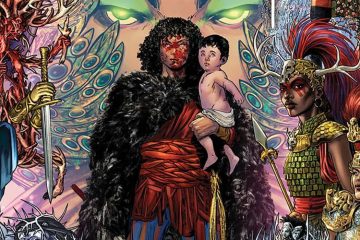After 20 years, Buffy the Vampire Slayer continues to have a profound and lasting impact on the portrayal of female characters in the media. At its core is Buffy, a complex and powerful female lead who defies traditional gender roles and expectations by simultaneously being both a high school student and a vampire slayer at the start of the series. The show is also celebrated for defying several genre tropes that not only subverted expectations in the late 90s and early 2000s but also laid the groundwork for more inclusive, complex, and nuanced storytelling.As a cult classic, most audiences will likely be familiar with the format and plot of Buffy the Vampire Slayer. A young, blonde, and bubbly teenager who outwardly embodies the typical high school cheerleader. However, underneath this superficial appearance, there is a strong and resilient young woman who has fought her fair share of vampiric and demonic threats, keeping the world safe and preventing it from falling into another apocalyptic event. From the beginning, the series is filled with tropes and themes that are delightfully subverted in ways that audiences likely didn’t expect at the time. This places it at the forefront of feminist television media decades later, proving that young women can have the strength to fight against daunting odds and that strength doesn’t always need to be physical.Buffy The Vampire Slayer has produced iconic episodes over the years that have contributed to the show’s lasting legacy. Apart from its complex characters, narratives, and innovative storytelling, the series is also known for its unique approach to its main character, which embraces Buffy’s femininity while simultaneously showcasing her inner strength. As a slayer, Buffy is imbued with the standard superhuman strength, speed, durability, and agility, abilities that help her fight against the forces of evil. However, her physical strength pales in comparison to her mental and emotional resilience. Buffy has encountered various personal and supernatural challenges, from her mother’s death and failed relationships to confronting vampiric overlords and malevolent forces such as The Master and The First Evil. Another aspect of her character that contributes to her complexity is that Buffy has experienced failure and reached her breaking point on multiple occasions. However, each time it appears to be the end, she always stands back up and confronts her enemies with the help of her friends and family.A Buffy Movie Sequel Could Course-Correct Two Controversial Character Deaths
After 20 years, Buffy the Vampire Slayer continues to have a profound and lasting impact on the portrayal of female characters in the media. At its core is Buffy, a complex and powerful female lead who defies traditional gender roles and expectations by simultaneously being both a high school student and a vampire slayer at the start of the series. The show is also celebrated for defying several genre tropes that not only subverted expectations in the late 90s and early 2000s but also laid the groundwork for more inclusive, complex, and nuanced storytelling.
As a cult classic, most audiences will likely be familiar with the format and plot of Buffy the Vampire Slayer. A young, blonde, and bubbly teenager who outwardly embodies the typical high school cheerleader. However, underneath this superficial appearance, there is a strong and resilient young woman who has fought her fair share of vampiric and demonic threats, keeping the world safe and preventing it from falling into another apocalyptic event. From the beginning, the series is filled with tropes and themes that are delightfully subverted in ways that audiences likely didn’t expect at the time. This places it at the forefront of feminist television media decades later, proving that young women can have the strength to fight against daunting odds and that strength doesn’t always need to be physical.
Buffy The Vampire Slayer has produced iconic episodes over the years that have contributed to the show’s lasting legacy. Apart from its complex characters, narratives, and innovative storytelling, the series is also known for its unique approach to its main character, which embraces Buffy’s femininity while simultaneously showcasing her inner strength. As a slayer, Buffy is imbued with the standard superhuman strength, speed, durability, and agility, abilities that help her fight against the forces of evil. However, her physical strength pales in comparison to her mental and emotional resilience. Buffy has encountered various personal and supernatural challenges, from her mother’s death and failed relationships to confronting vampiric overlords and malevolent forces such as The Master and The First Evil. Another aspect of her character that contributes to her complexity is that Buffy has experienced failure and reached her breaking point on multiple occasions. However, each time it appears to be the end, she always stands back up and confronts her enemies with the help of her friends and family.
#Buffy #Vampire #Slayer #Feminist #Staple #Years
Note:- (Not all news on the site expresses the point of view of the site, but we transmit this news automatically and translate it through programmatic technology on the site and not from a human editor. The content is auto-generated from a syndicated feed.))



